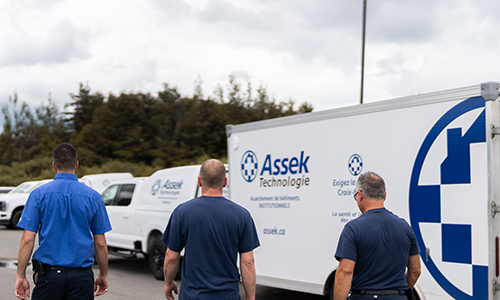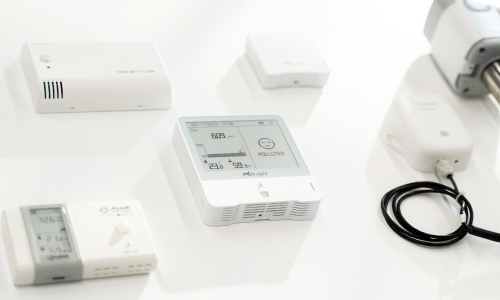Education
Top 5 connected solutions to improve the health and safety of school buildings and their occupants.
Discover how connected solutions are revolutionizing the health and safety of school buildings, ensuring a healthy, safe, and sustainable environment for students and educational staff.

The health of school buildings: a key issue for safe and comfortable learning environments
Ensuring a safe and comfortable environment for students and educational staff is a major challenge. Emerging technologies, particularly IoT (Internet of Things) sensors, provide innovative ways to support the health and safety of school buildings. Here are five connected solutions designed to enhance sustainability and security in educational institutions.
1.Water infiltration detection: protecting infrastructures
Water infiltration, often undetected, can damage walls, ceilings, and floors, leading to costly repairs.
Connected sensors help:
- Quickly identify water infiltration and related damage.
- Reduce risks of damage to educational spaces.
- Preserve indoor air quality by preventing mold growth.
➡ Concrete example: Preventing mold in classrooms after roof leaks caused by freeze-thaw cycles.
2. Acoustic monitoring: enhancing concentration and reducing noise fatigue
Noise significantly impacts the concentration and well-being of both students and teachers. IoT sensors allow for:
- Real-time measurement of sound levels across educational spaces.
- Identification of high-noise zones that may disrupt learning.
- Intervention during anomalies, such as excessive noise signaling potential safety concerns.
➡ Concrete example: Identifying excessive noise levels in classrooms near a playground and implementing acoustic solutions to create a more conducive learning environment.
3. Vaping detection: discreet support for youth education and prevention
Vaping is an increasing challenge in schools, affecting students’ health and well-being. Connected sensors provide a discreet approach to:
- Detect smoke emissions in real-time within indoor spaces.
- Alert staff for timely and appropriate interventions.
- Provide data to educate and raise awareness among students about vaping risks.
➡ Concrete example: Detecting vaping activity in school bathrooms without stigmatizing students, enabling targeted educational efforts.
4. Humidity control: maintaining air quality
Excess humidity poses risks to both occupant health and building durability. IoT sensors enable schools to:
- Continuously monitor humidity levels throughout the building.
- Prevent conditions that encourage mold growth.
- Ensure a healthy environment for students and staff.
➡ Concrete example: Quickly identifying abnormal humidity increases in a school library.
5. CO₂ monitoring: improving indoor air quality
Air quality is vital for students’ concentration and well-being. IoT systems enhance air quality by:
- Monitoring CO₂ levels and fine particles in real-time.
- Providing insights to adjust airflow based on occupancy.
- Promoting better focus through regular air renewal.
➡ Concrete example: Optimizing ventilation in crowded classrooms to reduce CO₂ levels and improve students’ comfort.




